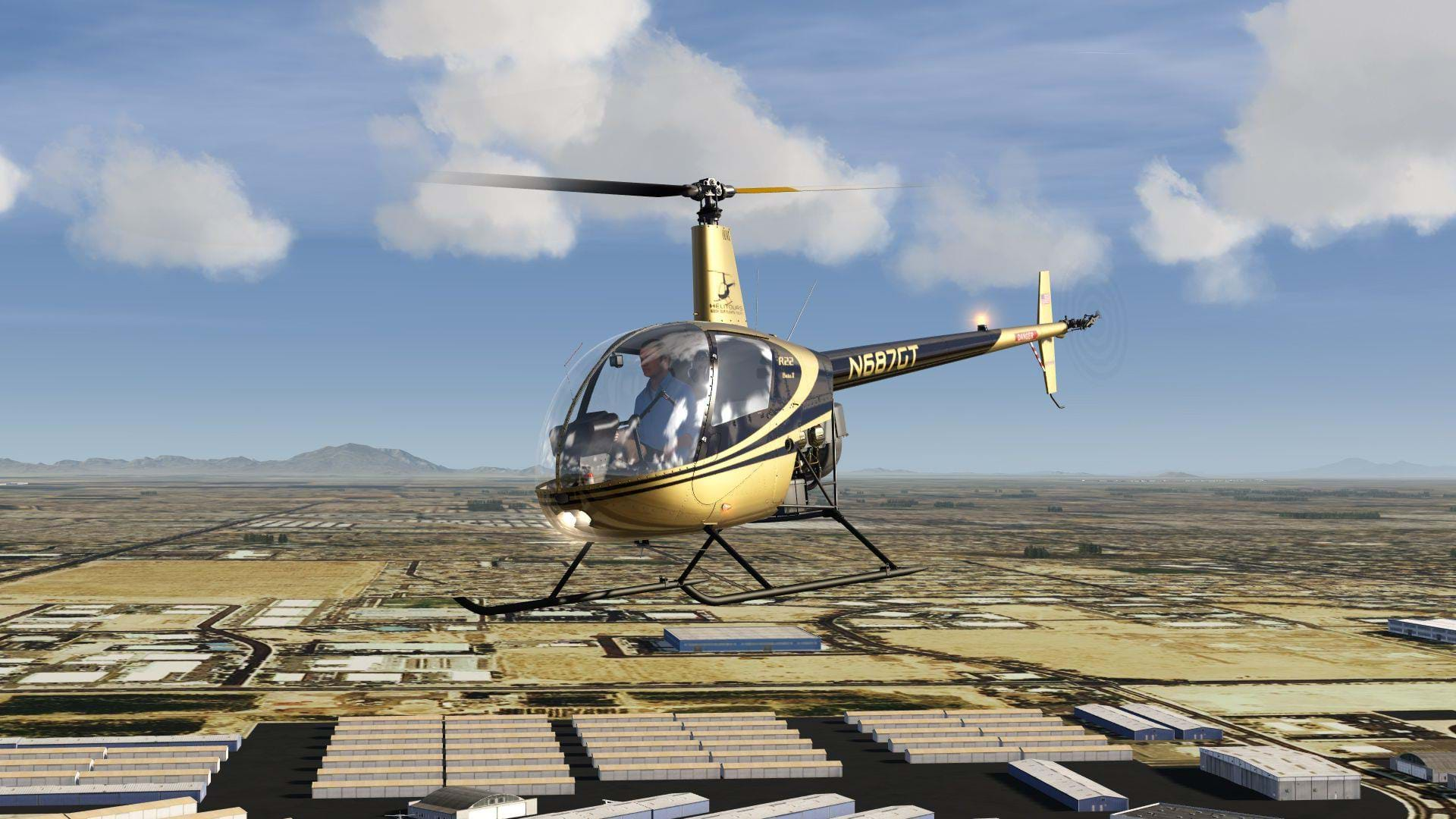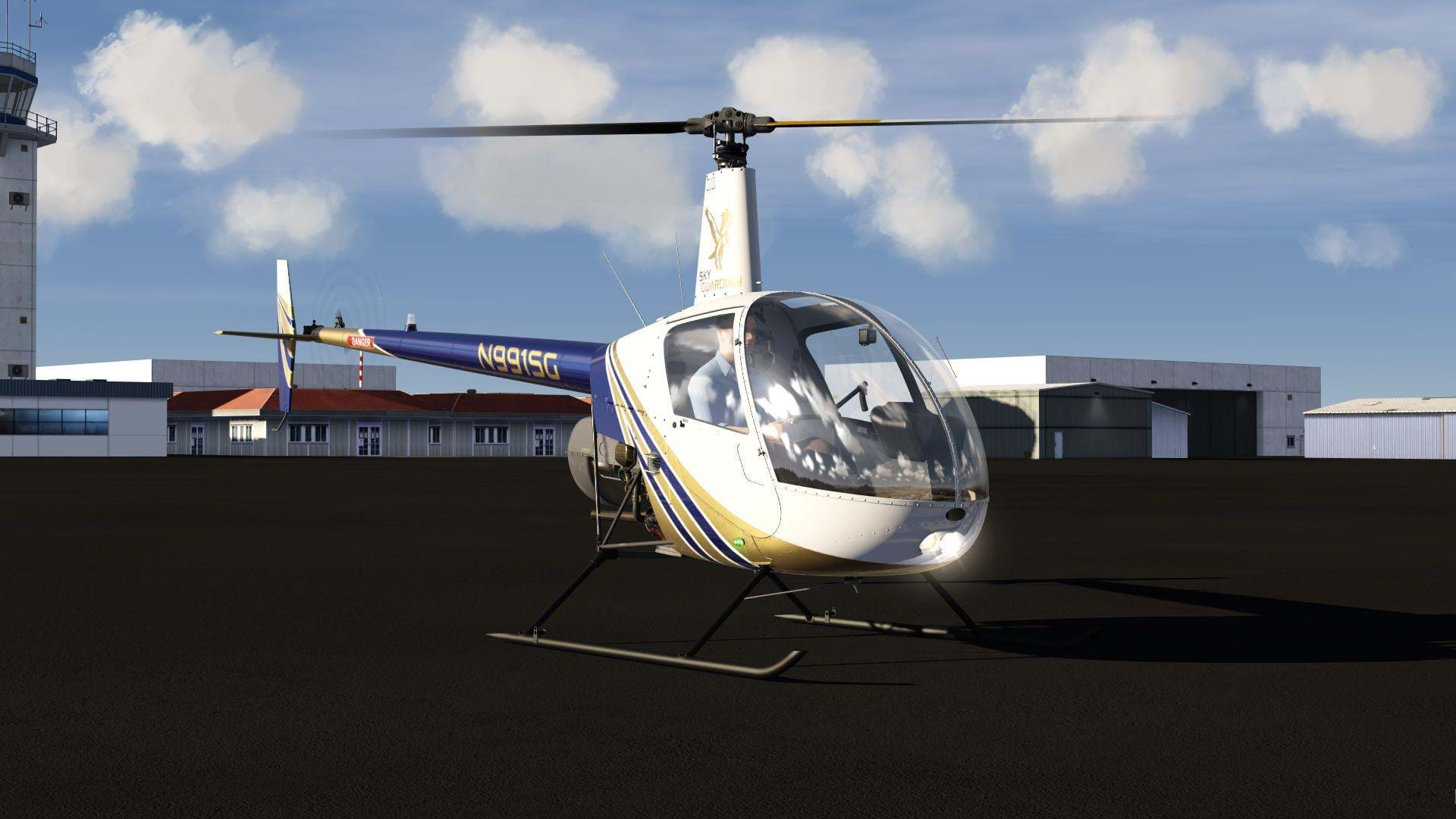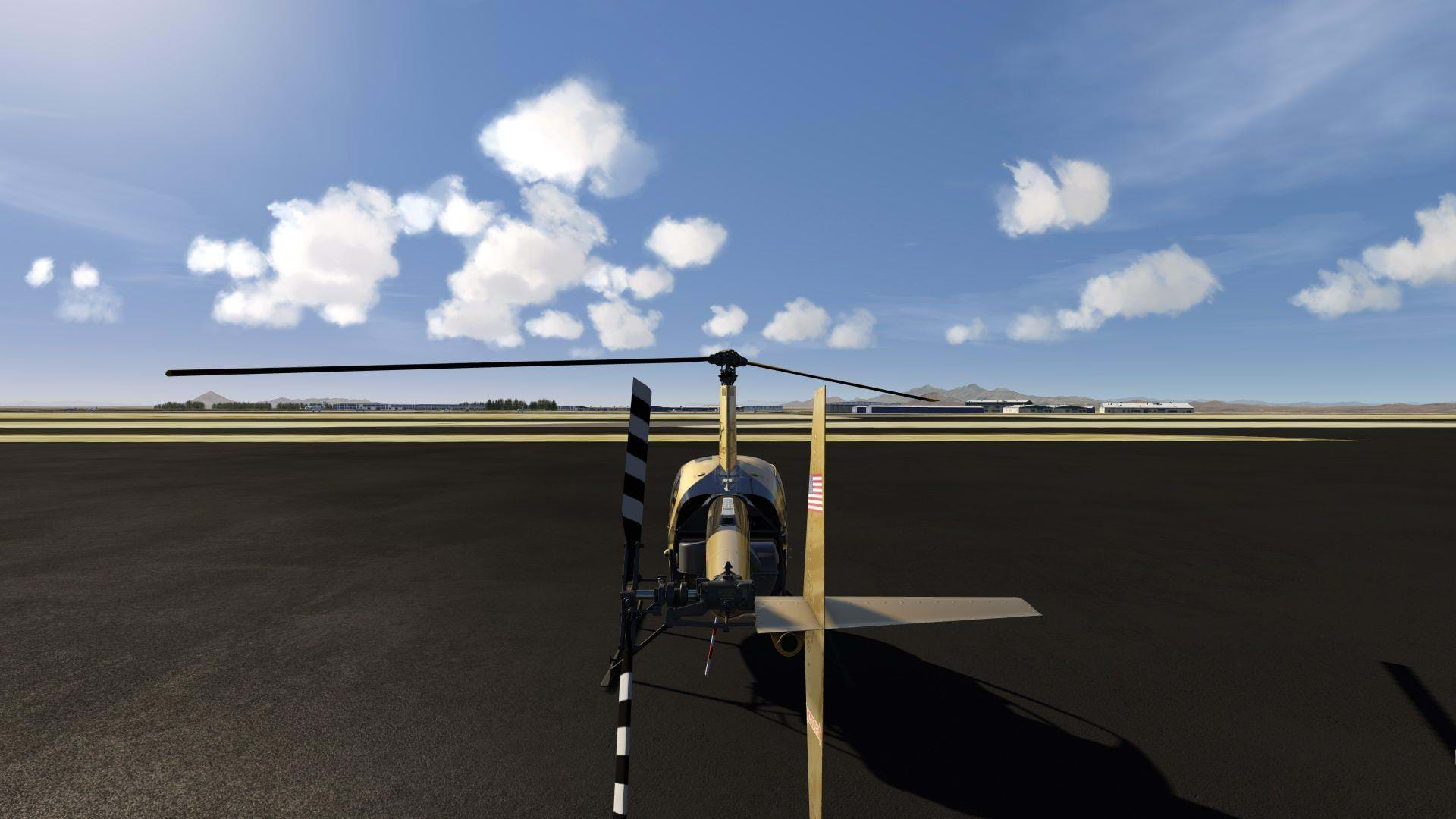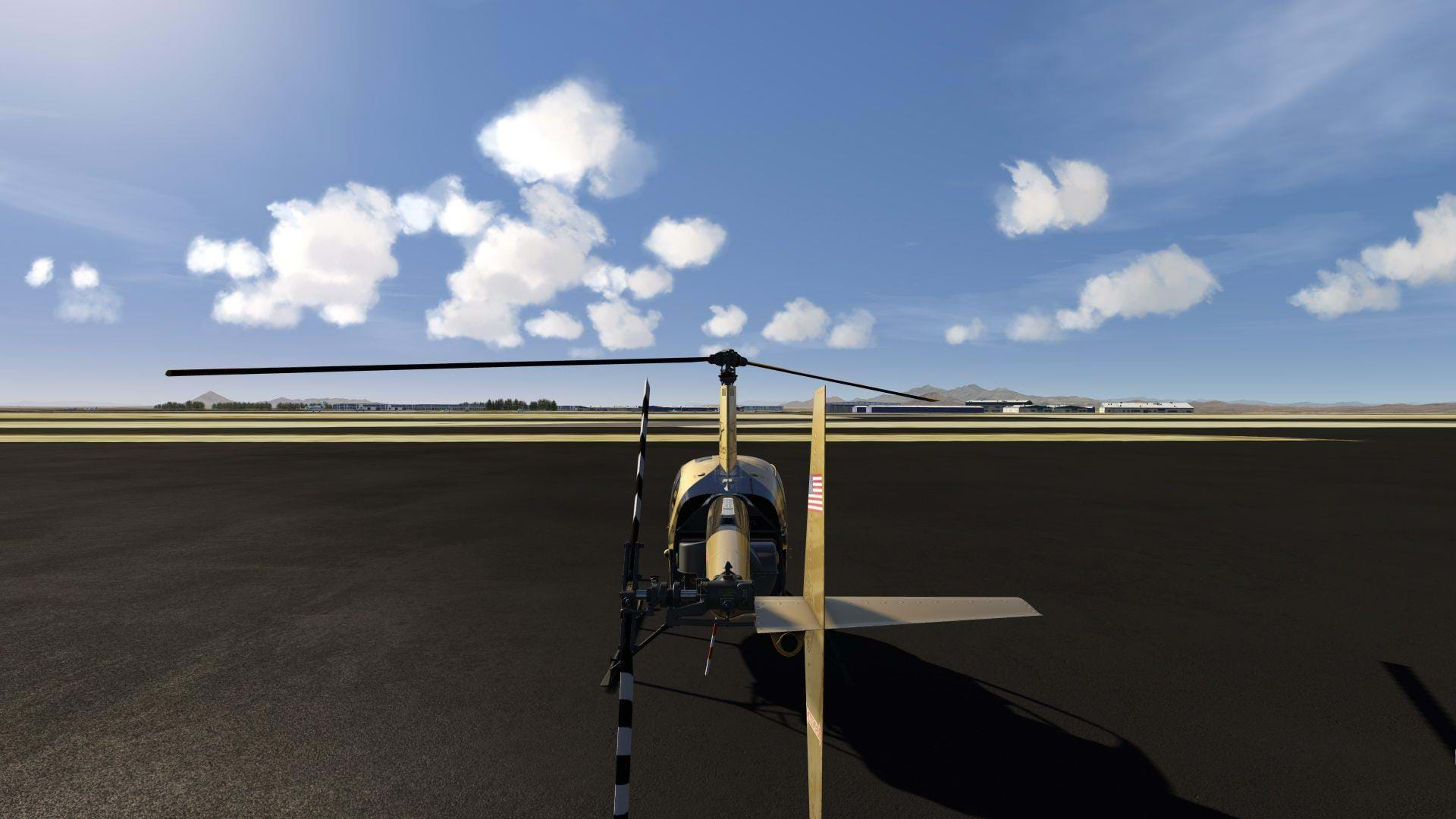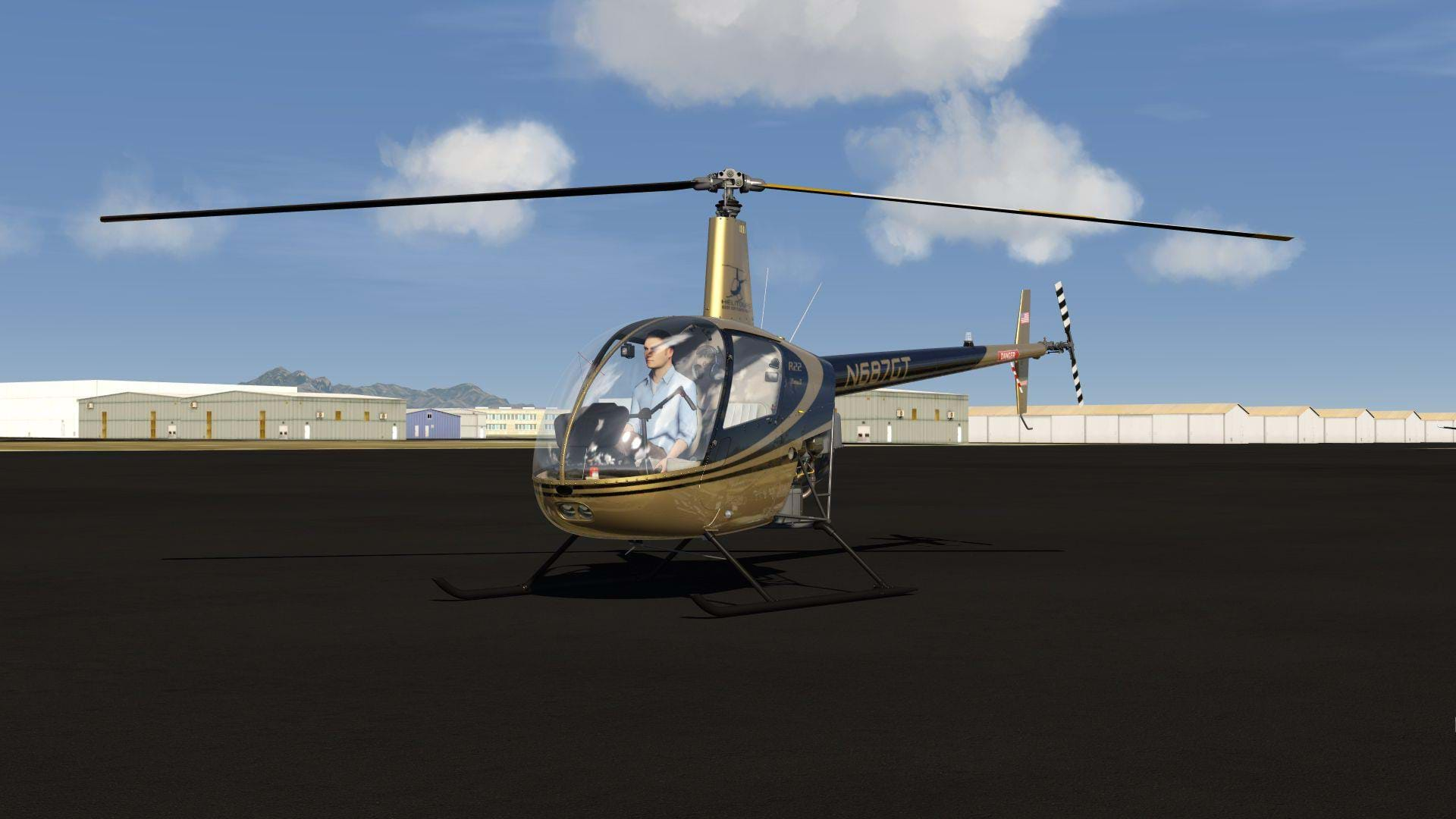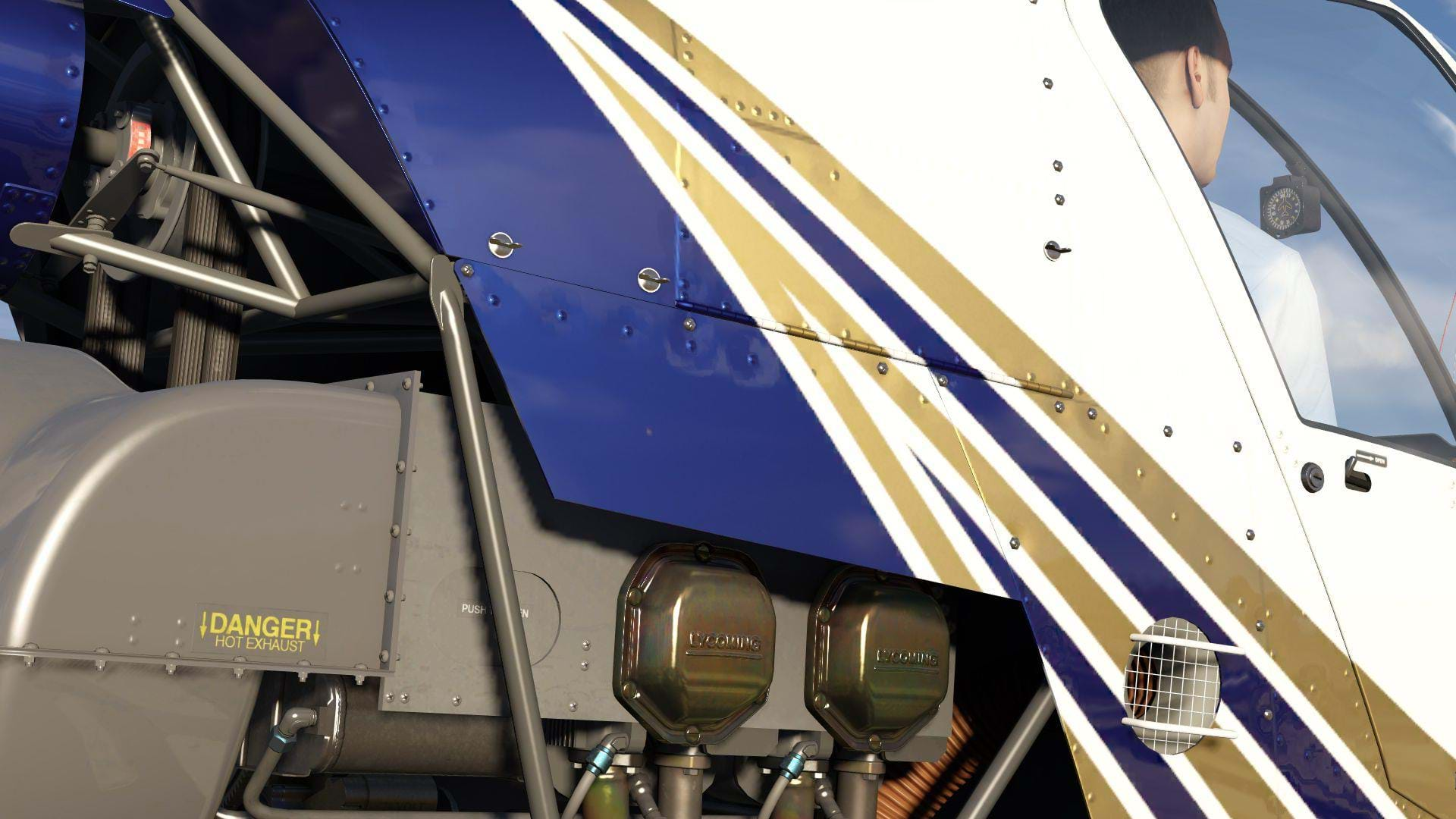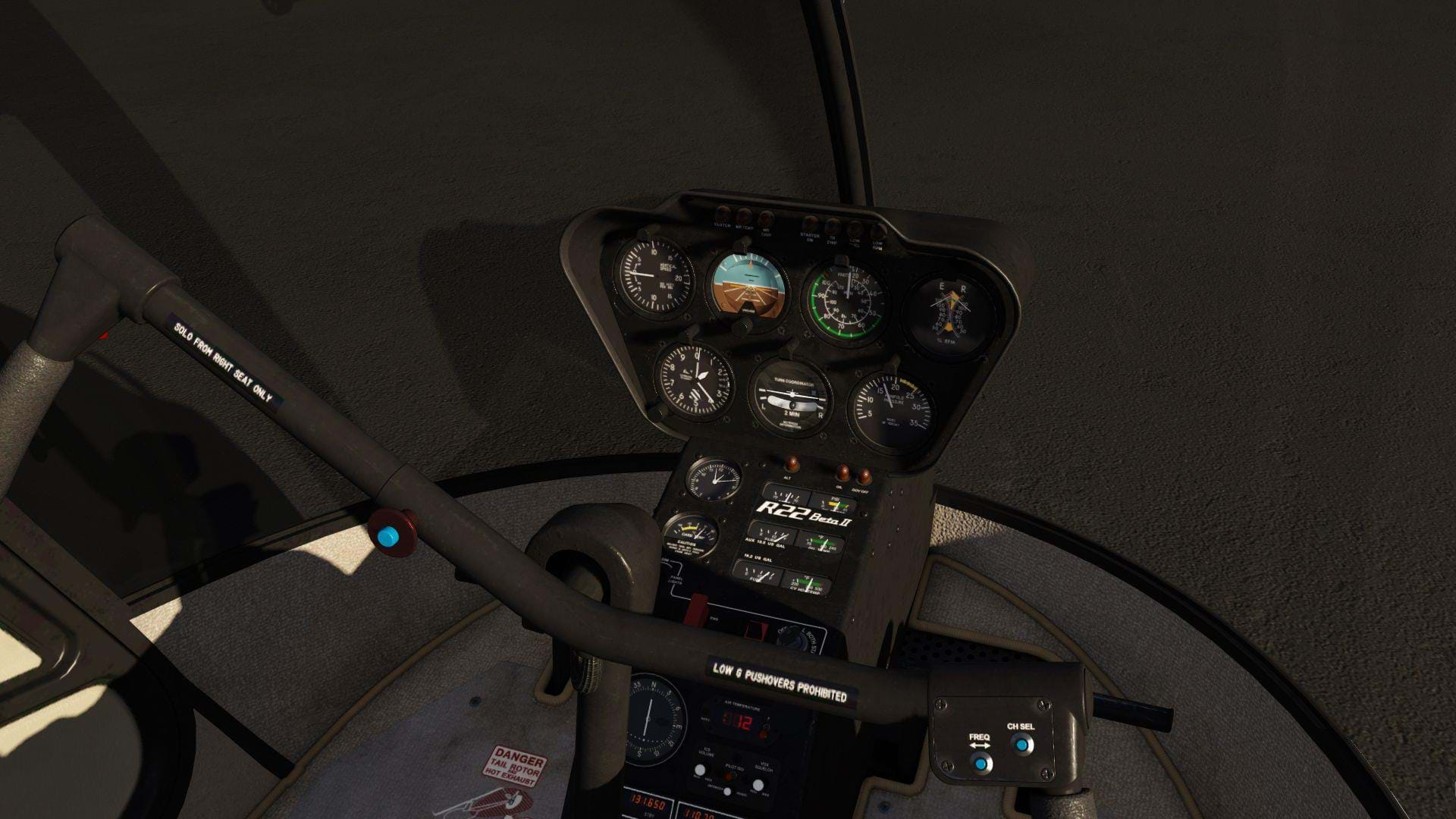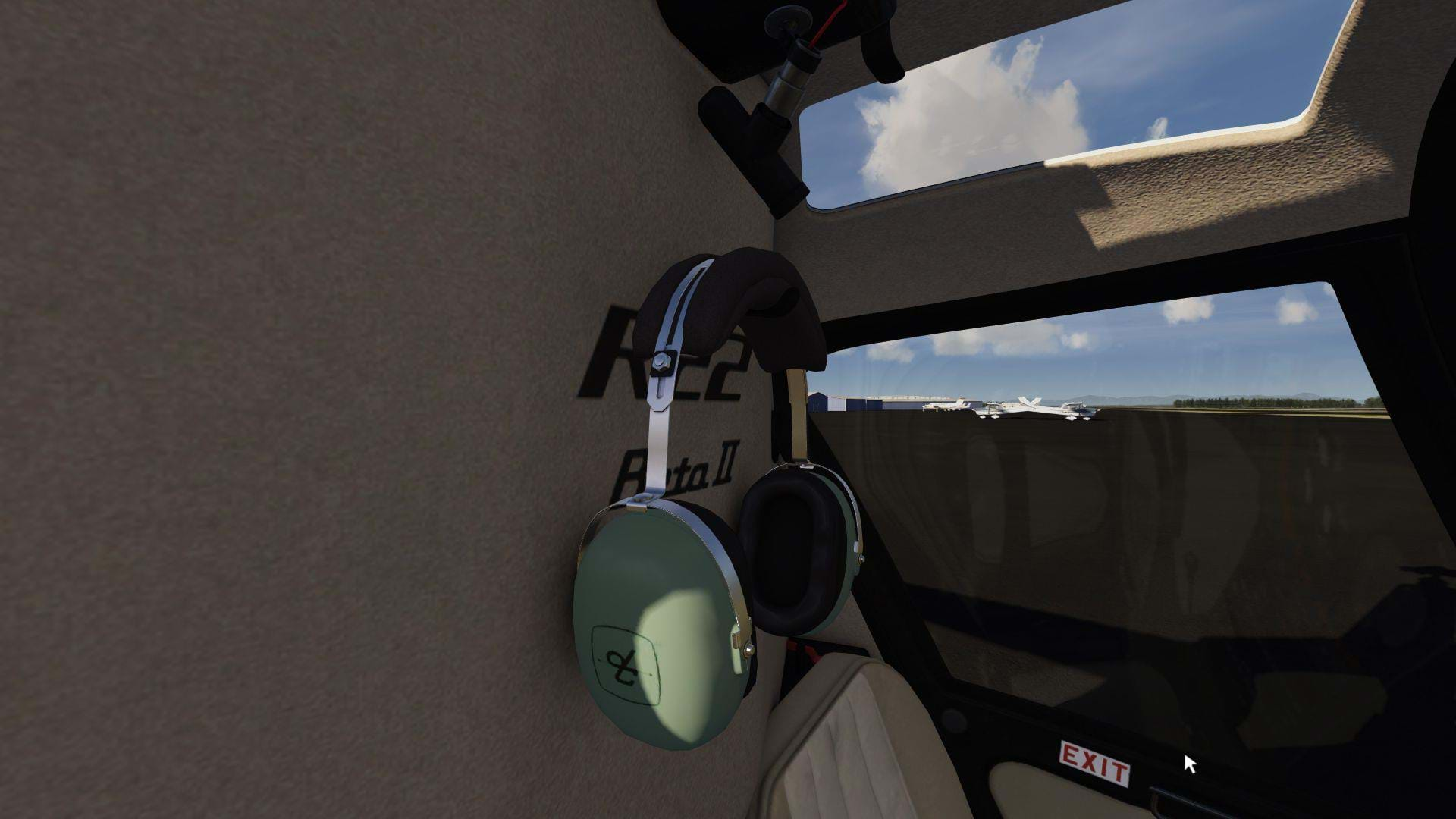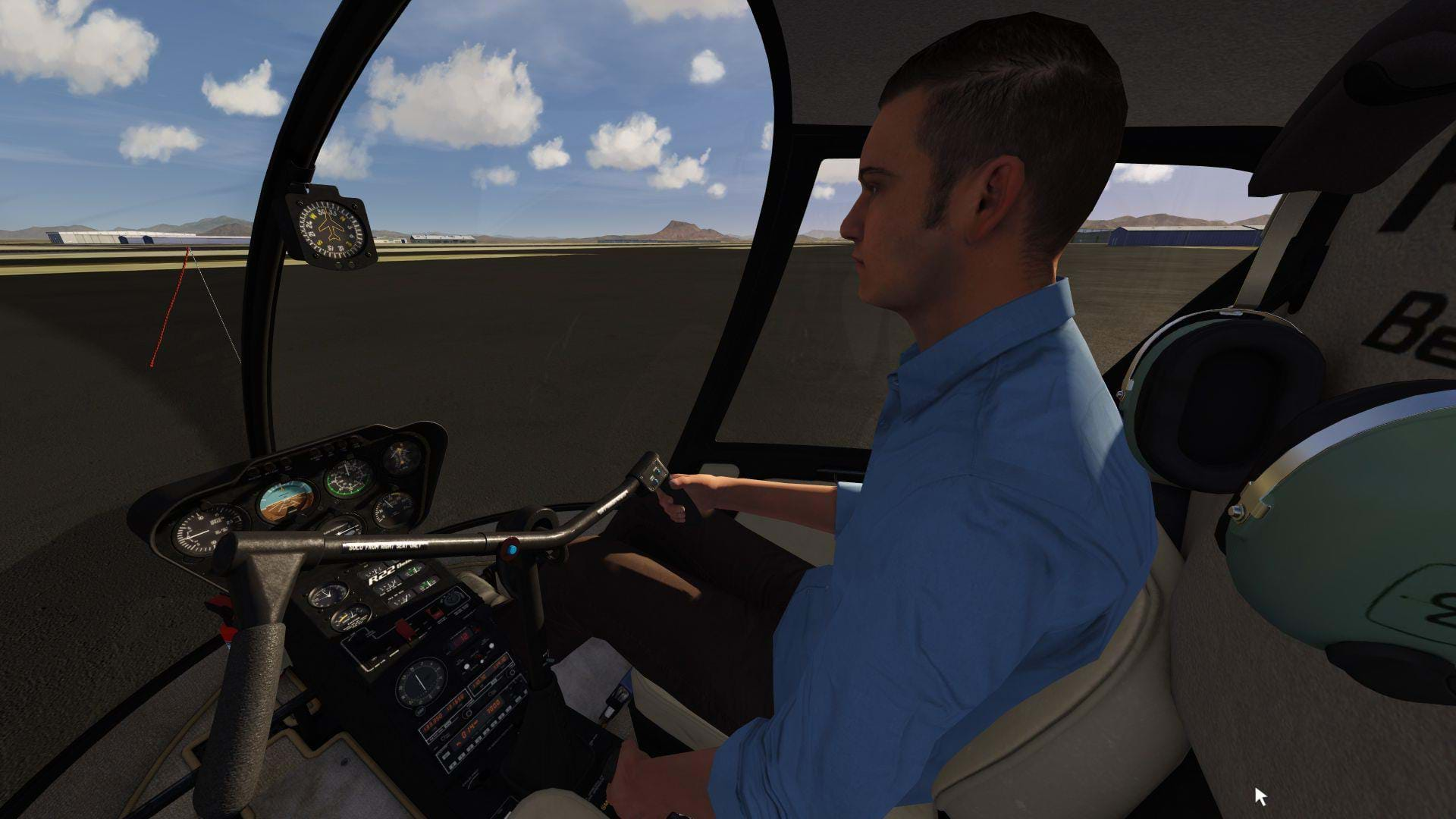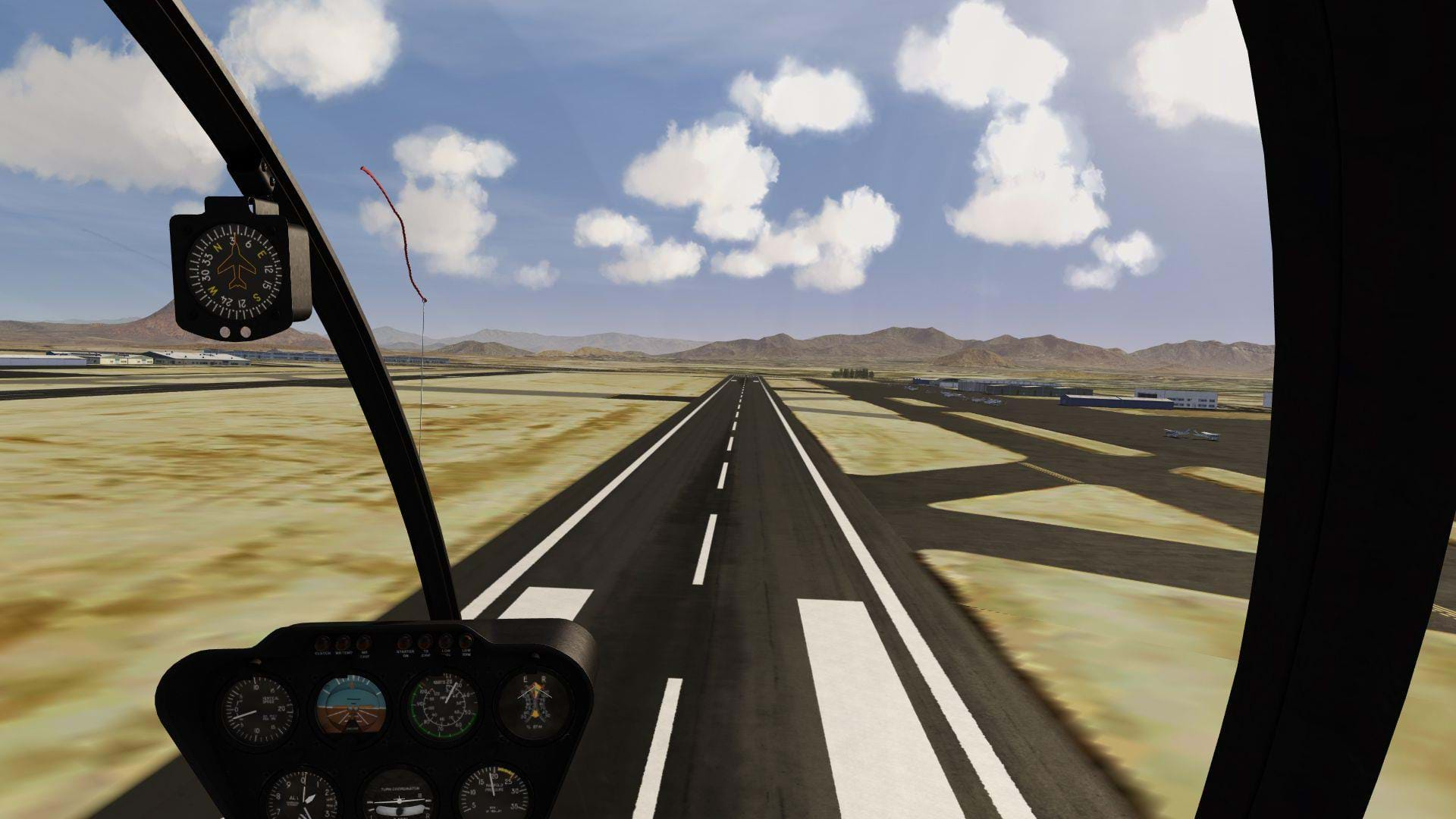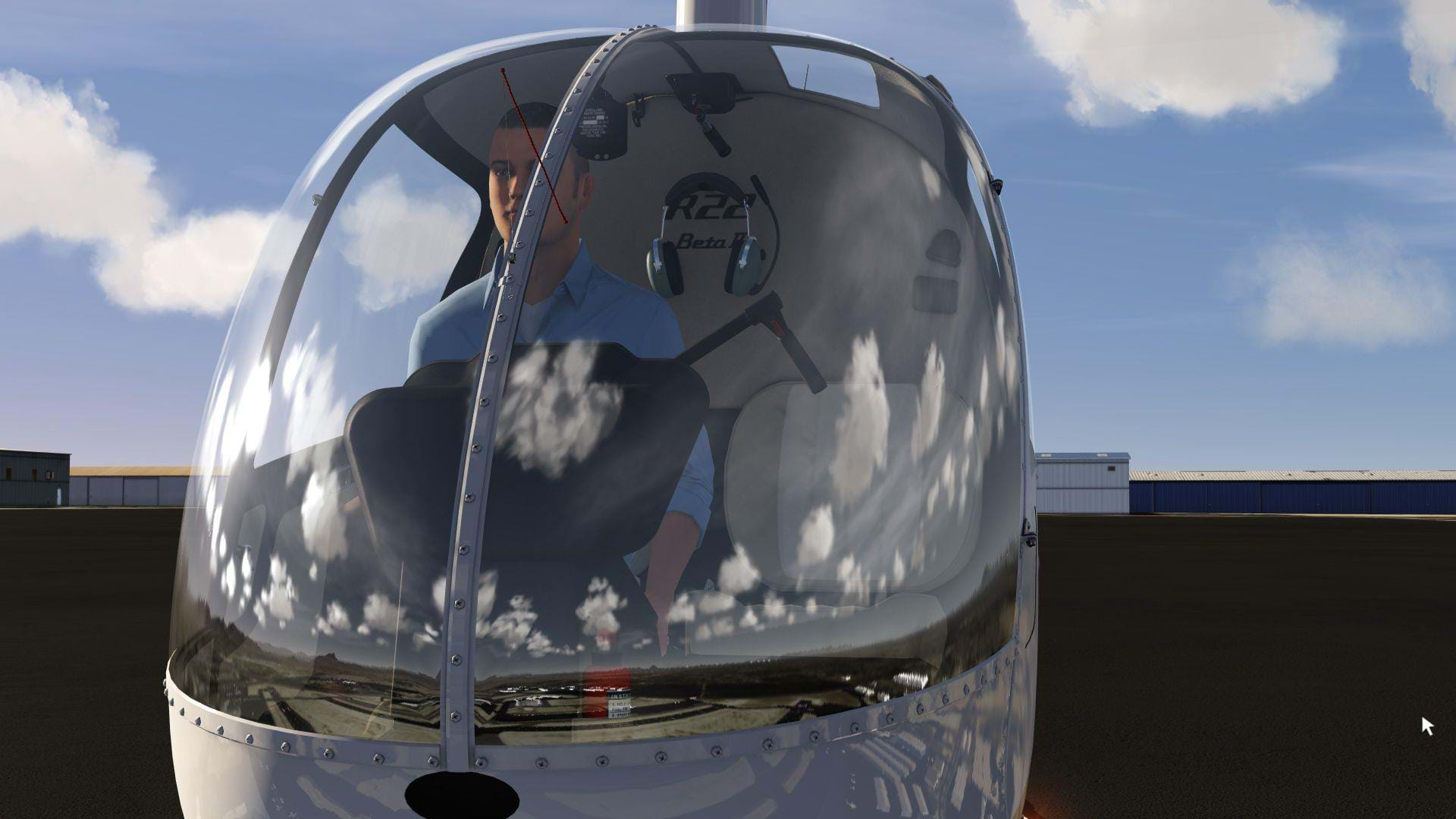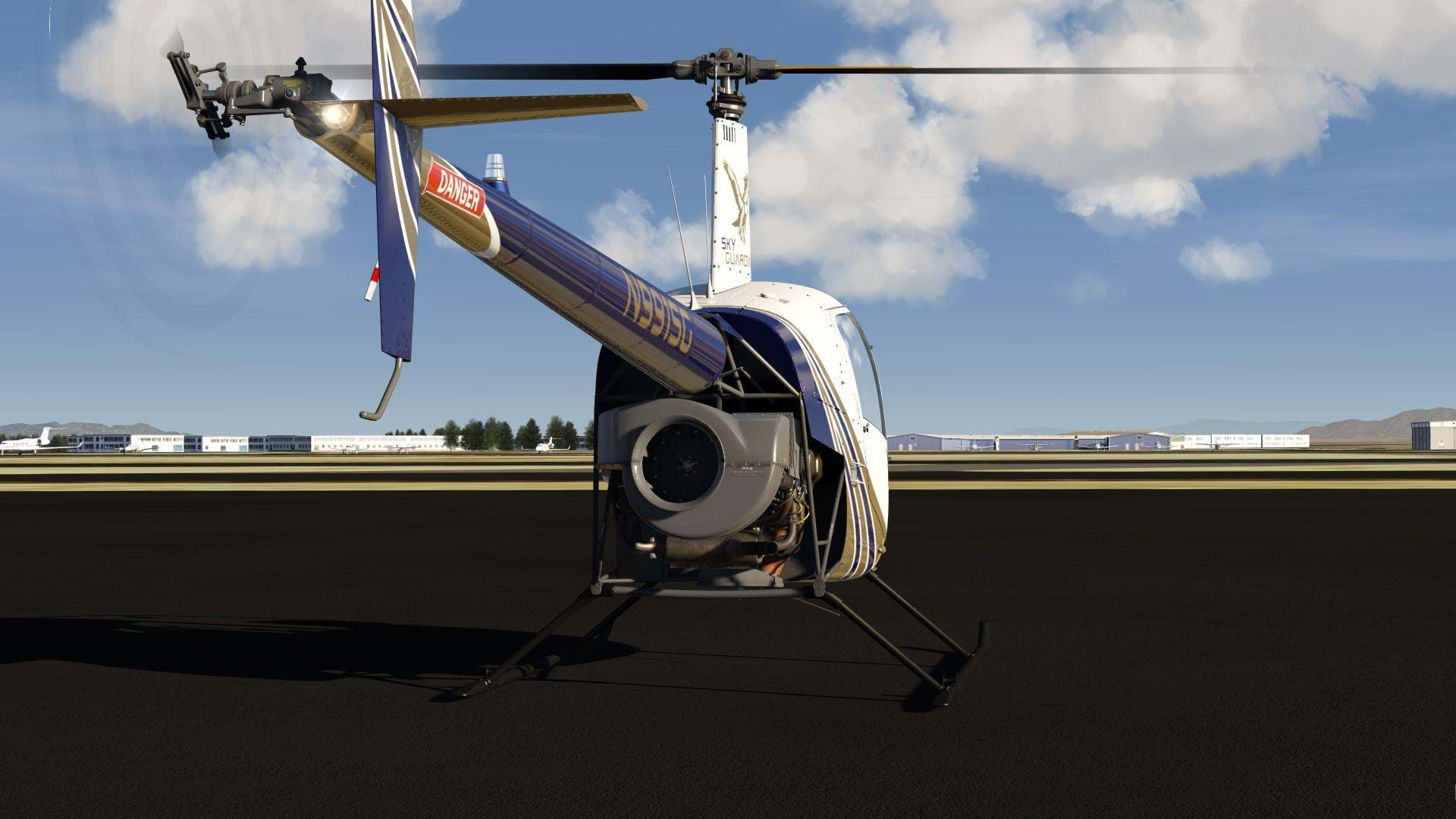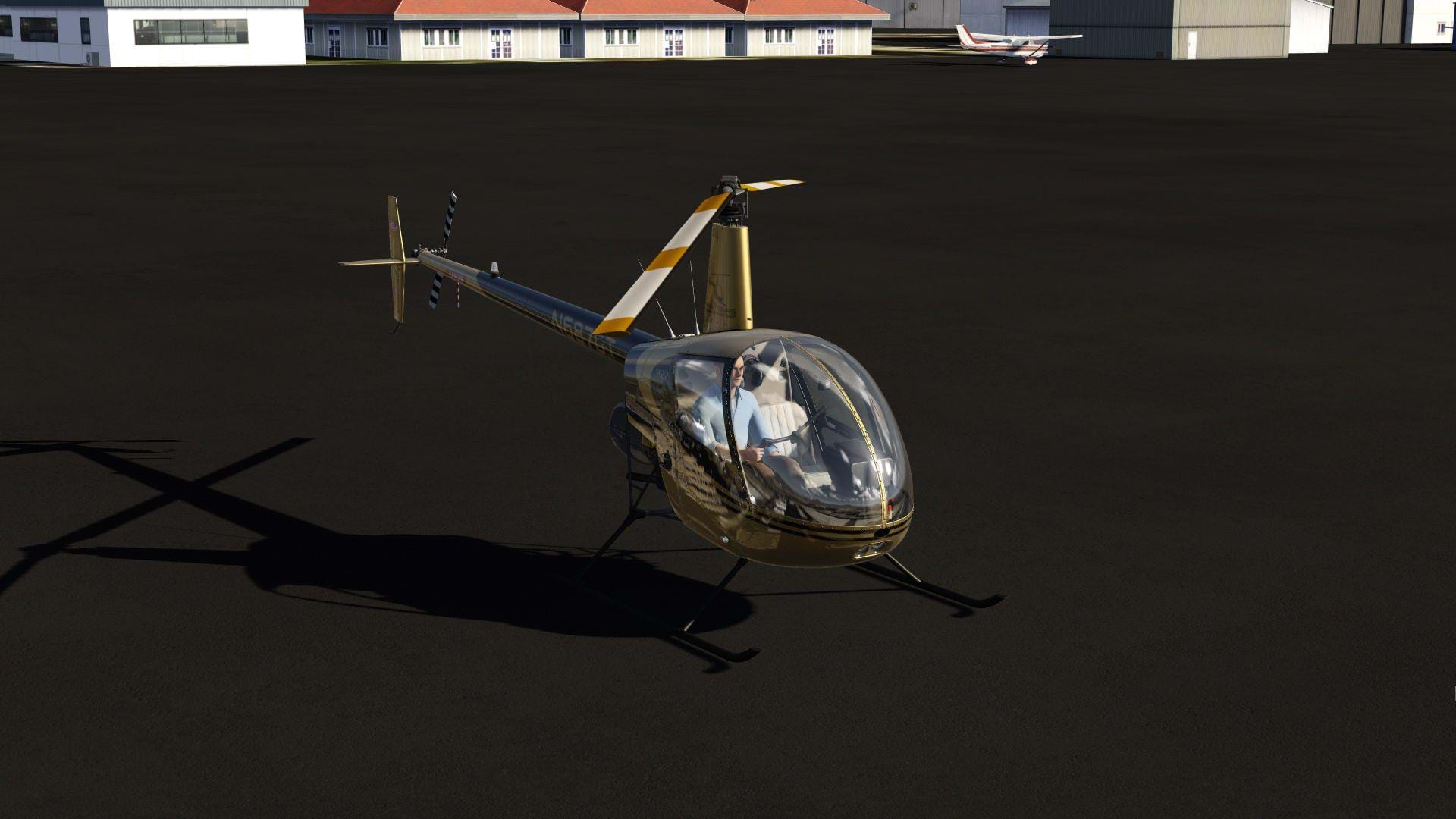The R22, turns 40 in March… That’s right: 40! Not bad for a little helicopter effectively designed by one man.
Actually, it first flew in 1975 but it’s been in continuous production since March 1979. I don’t think that many people thought, at the time, that a bug like helicopter like the ‘Robbie’ would last the distance. The majority of helicopter pilots trained since the mid 80s, including myself, have probably done so in the R22.
Frank Robinson’s goal was to bring helicopter flying to the masses with a machine that was cheap and reliable, and on both of those accounts he certainly has achieved his aims.
As of 2016, 4,600 R22 helicopters have been sold from the factory, which is a pretty damn good effort for a company with humble beginnings. The first aircraft delivered starting in 1979 have become known as R22 Standards.
The originals were powered by a Lycoming O-320 A2C engine delivering 150hp. This was replaced by a 160hp B2C engine in the HP model. Externally, these two models were identical.
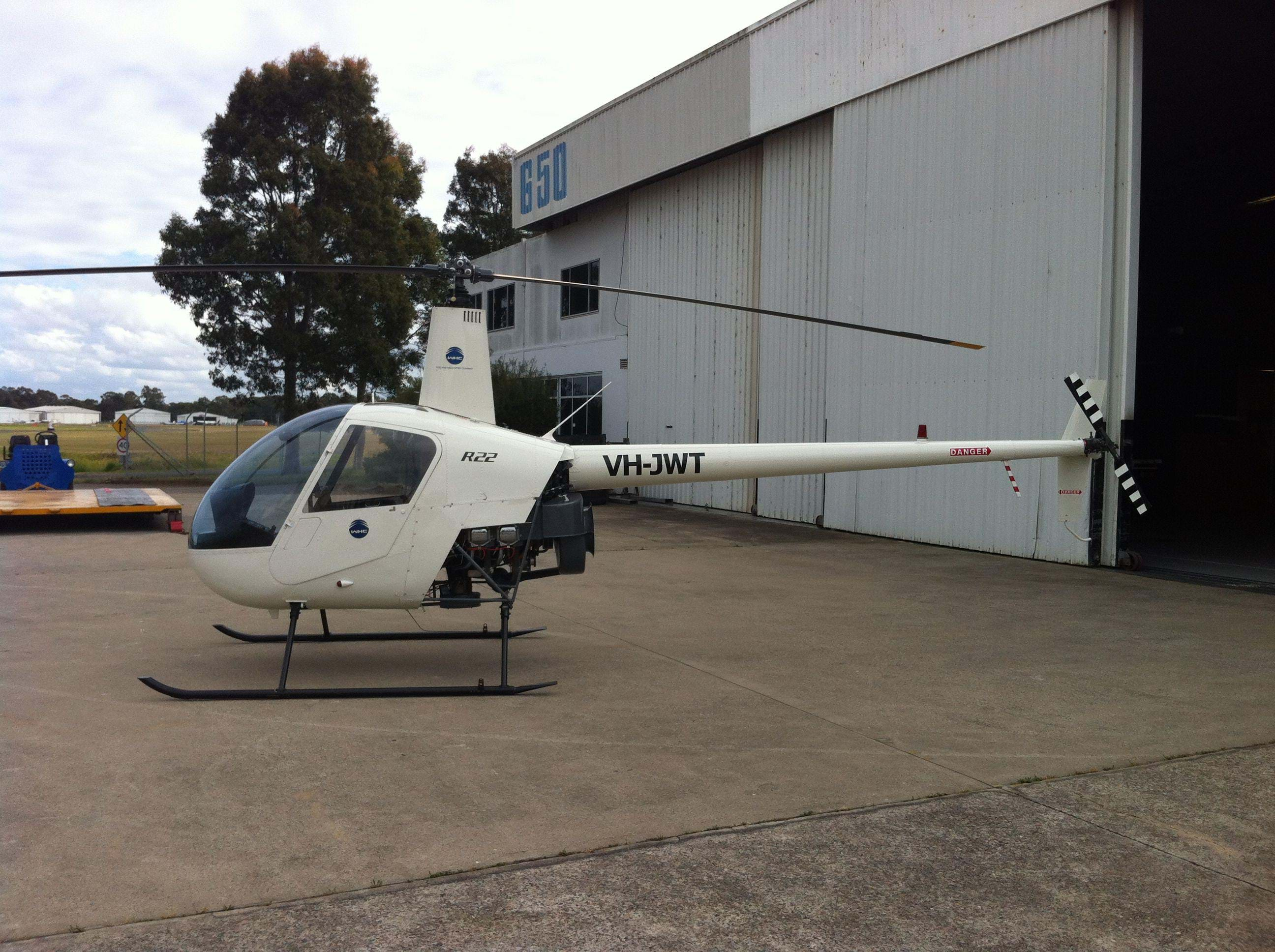 R22 Standard converted to Beta. Note the original fuselage shape. Bankstown, Australia.
R22 Standard converted to Beta. Note the original fuselage shape. Bankstown, Australia.
In 1983, the Alpha model was certified retaining the B2C engine, but with a slightly redesigned fuselage and tail boom for improved flight characteristics close to the ground. This was followed by the Beta model adding an auxiliary fuel tank and an electronic governor to manage RPM.
Finally, the Beta II was certified with a de-rated 180hp O-360 J2A engine for improved altitude performance with a governor and rotor brake as standard. In addition, being that the engine is carburetted, there is a carb heat assist (more on this later). The Beta II is the only model in production today. Being that the machine is designed as a lightweight commuter for private use, many of the components used in the aircraft have a flight time limit as well as a calendar life limit after which they are thrown away.
There is a major rebuild after 2200 hours in service or 12 years calendar for the engine and airframe… well for most countries with the notable exception of Australia where, for some reason, they stipulate that the engine is overhauled at 2000 hours (don’t get me started on the Australians) When the machine comes out the other end after a rebuild it is effectively a new helicopter.
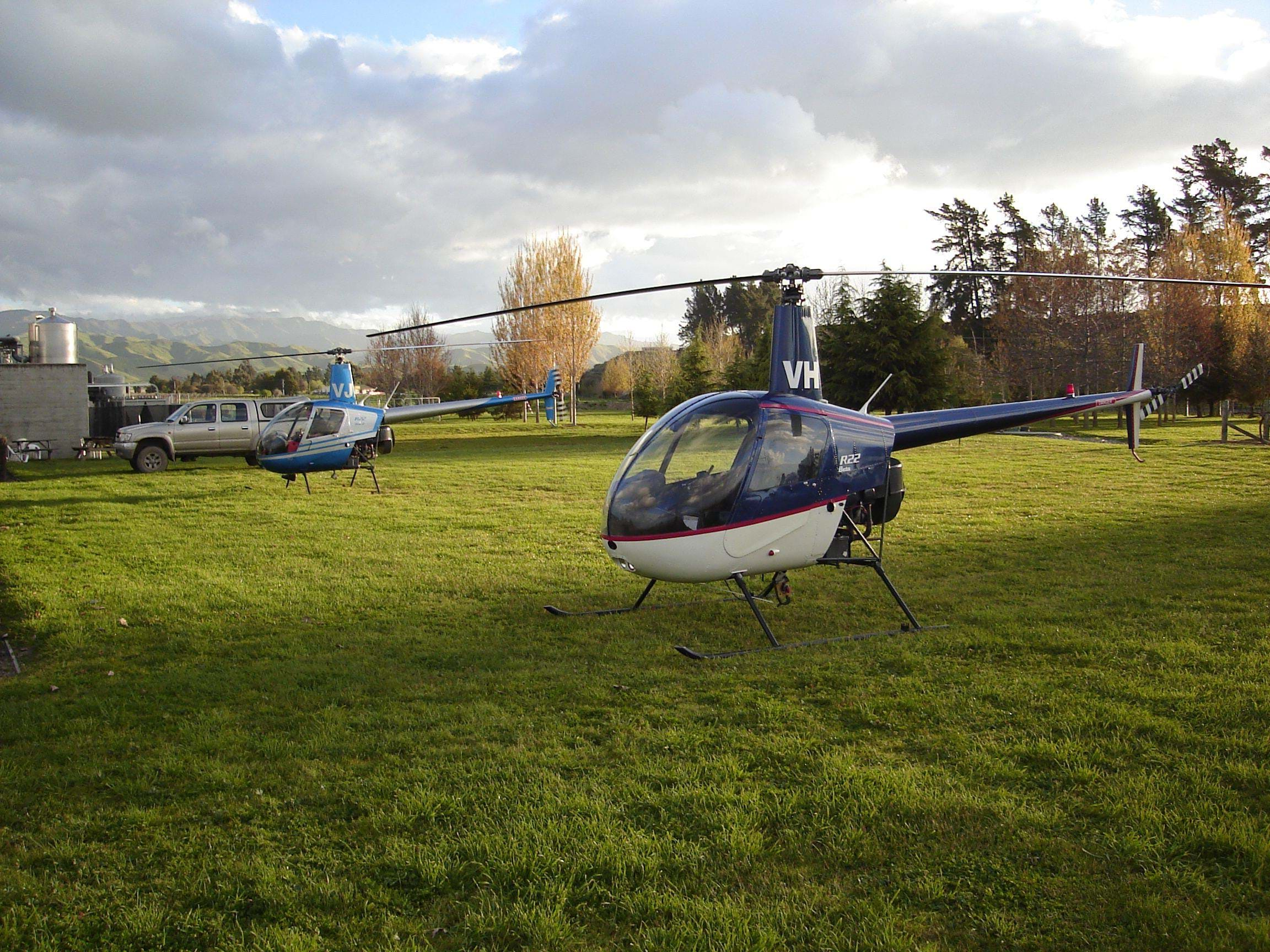 R22 Beta and Beta II on frost work. Blenheim New Zealand
R22 Beta and Beta II on frost work. Blenheim New Zealand
Over the last few years, rumours have been circulating around the industry that the R22 is to be discontinued in favour of its bigger brother, the R44. This may be in Robinson’s long-term plan and with the introduction of the R44 ‘Cadet’ they may be making the first moves in this direction, but for now the little R22 is soldiering on.
I first flew the R22 in 2008 when I started my helicopter training. In 1000 hours in different R22s, apart from two small magneto glitches, the aircraft never let me down. That’s more than I can say about just about every other helicopter I’ve flown.
The IPACS R22
I have to admit, I wasn’t really interested in trying FS2 until the R22 was released.
The non-living world, the inability to shut down and start up aircraft… It was all a bit too ‘arcade’ for me. When word of the R22 started to trickle down and some screenshots started to appear, my ears perked up a little.
When it was rumoured that Claude Vuichard was involved, I really took note. Claude is a bit of a legend within the industry so I thought that if he was involved, it must be at least half way decent. Right from the start, the screenshots were impressive, but I was curious to see if the reality lived up to the hype.
The Model
The first thing that you tend to notice when you load the aircraft up within the sim is that, yep, it looks like an R22. The aircraft is modelled in exquisite detail all over. Little details like the main fuel tank drain point on the left hand side of the aircraft are 3D.
The engine, which is very much exposed on the R22, is quite a sight. All of the components are perfectly modelled, including the driveshaft and clutch when looking up under the cowlings on the right hand side. The tail rotor and controls are damn near perfect. Moving the pedals moves the bell crank and spider in an amazingly fluid animation.
All of the little details are present all over the model, from the lights to the aerials and the heater inlet, and makes you wonder what sort of person sat down to create this thing…
Unfortunately, it’s not absolutely perfect. The rotor head appears to be broken. When the aircraft is shut down, the blades don’t droop, instead they hang from the head as if the droop stops are missing or broken. It’s a bit of a pity, as it was one of the first things that I noticed on the model, so it’s a little obvious.
Thankfully, this is about the biggest error in the 3D model that I can find.
When the engine is running, there are a number of animations to feast your eyes upon. The rotor and tail rotor animations are detailed and reasonably accurate. I might’ve chosen a different, more ‘visible’ way of showing the main rotor in motion but I’m not a 3D modeller so…
Also to note, is that what I said previously about the blades not drooping disappears when the aircraft is running. The tip path plane is only just visible most of the time, but moving the cyclic moves the disc around like it should. If you look at the engine when it’s running, it’s pretty impressive.
The alternator belt spins as does the lower bearing, the squirrel cage blower and the drive shaft… The clutch belts don’t appear to be spinning when the clutch is engaged but it’s very difficult to see, so I can’t really mark them down on that.
Moving inside, the level of detail is just amazing. All of the various instruments and fixtures are present. The aircraft is equipped with a single NAV instrument which is an option on the real thing but not a common one due to what the helicopter is primarily used for. I guess they have to try to cater for everyone.
The pilot figure that sits in the right hand seat is up to the usual FS2 standards although curiously he doesn’t wear a headset even though one is hanging on the hook next to his head. Something that I would really like to see and it’s something that not enough developers do, is the ability to remove the dual controls. Hopefully this will happen to this R22 eventually.
The other thing that I noticed right away is the non prototypical yaw string. The R22 usually has a single bit of string that is held to the canopy bow by a bracket and so has the appearance of two bits, one out each side of the canopy bow. For some reason, this model has a single string like the AS350. The yaw string moves with the wind very realistically and this carries over to when you go flying. It’s quite impressive.
Texturing
The texture sheets placed over the 3D model are quite incredible.
One of the first things I noticed were the ‘Teletemps’. They are clear enough that you can see what temperature that component has gotten to. Of course, these don’t change but WOW, very impressive that you can read them like you would on the real thing.
The interior texturing is equally impressive in so far as the slight raised texturing on the cyclic centre pivot point and the top of the instrument panel combing is visible in the sunlight. Very convincing stuff. There isn’t much that one can write about the texturing, so I’ll let the photos speak for me.
About the only thing that I can say in the negative is that the reflections are overdone. This isn’t an issue unique to the R22 as I feel that a lot of the reflections are too extreme in FS2. I had an instance where the yaw string was reflected on the canopy… real aircraft, working aircraft simply aren’t that shiny. Also, you will see in the above shot that the reflection of the airport on the front of the aircraft is from 500ft or so.
Another thing that I did notice in the interior is actuating the fuel shutoff valve only changes the label texturing; the handle itself doesn’t move at all. Kind of a strange error that I suspect will be fixed at some stage.
Sounds
The R22s Lycoming engine is mounted right below the pilot’s rear end and the main rotor transmission is mounted right behind his lug so the R22 has an interesting mix of noises going on.
Probably the overriding sound is the transmission which has a fairly low frequency hum. IPACs, in my opinion have this bang on. The low RPM horn, which is a noise that’ll be familiar to anyone who’s done a reasonable amount of time in Robbies is there, although I remember the frequency of the noise being different.
It gets your attention as it’s supposed to, though. The one noise that isn’t present that, again, will be familiar to Robbie pilots is the noise of the clutch slipping while engaging. There’s also no sound from the rotor brake but I didn’t really expect it. Externally, the sounds are also excellent. The tail rotor buzz present on the R22 is very well represented. Overall the sounds are very convincing.
Well done, IPACS.
Systems
This is where a lot of addons fall over. Helicopters (and a lot of aeroplanes) are complex bits of machinery and so it’s not really surprising that many developers by design or by ignorance, fail on this level.
Even with the professional flight model, the R22 loads in the sim ready to fly. For the purposes of this section, I’ll go through it from a cold and dark state just making notes.
Start and Runup
- Rotor brake moves and works as it should.
- Fuel shutoff works but with the texturing note above.
- Some circuit breakers are visible, but none work.
- Control frictions don’t work. Cyclic friction moves but does nothing and collective friction does neither.
- Carb heat lever hidden and only moves slightly.
- The master switch brings everything up as it should.
- Lighting controls all work as they should except that the landing light shouldn’t work until the clutch switch is engaged.
- Starting engine goes according to real life except that the mags are very difficult to actuate with the scroll wheel on the mouse. They really should find a better way of doing this.
- Oil pressure takes a really long time to rise after the engine starts.
- Clutch engage is pretty accurate.
- Mag checks are accurate in terms of drop expected.
- Overrunning clutch works however it is very difficult to get a needle split on the ground. *
- Governor switch is hidden in the end of the collective. IPACS have solved this by having the end of the collective as a sort of pop out switch. Not a bad solution.
In Flight
- No carburettor heat, no change on temperature gauge and as a result no carb heat assist as is fitted to the Beta II.**
- The aircraft has no correlator (mechanical link between collective and throttle butterfly) ***
- If you have a mechanical throttle, unless it is set at the max range, it overrides the governor while you’re flying even if you’re not moving it.
Shutdown
- If you’re not using a manual throttle, disengaging the governor at flying RPM will ‘goalpost’ both needles, sending engine and rotor RPM through the roof.
- No discernible temperature drop idling at 75%
- Disengaging the clutch at 55% in real life, one waits 30 seconds before killing the engine. The clutch is still moving at this point. In the sim, after about 20 seconds the clutch is completely disengaged, and the engine RPM jumps up.
- No oil pressure drop or alternator light when engine is shut down. Alternator light appears to be directly connected to the switch.
* This actually is not inaccurate. Some aircraft, particularly when it’s warm have a hard time getting a decent needle split on the ground requiring the pilot to bring the RPM up a lot higher to achieve the desired result.
** Carb heat assist is a mechanical cam that adds carburettor heat as the collective is lowered (throttle butterfly closing) Early on in the R22, there were a number of accidents where the engine stopped due to carb icing. With the introduction of the Beta II, the assistance system was in introduced.
*** All piston engined helicopters, with the exception of some Bell 47s, have a correlator that will open the throttle butterfly as you raise the collective. The governor fine tunes the RPM to keep it in the green range.
Many of the issues that I have pointed out here are fairly minor and some are due to the core engine of FS2. However, the lack of carburettor heat control which is something that is drilled into students on the R22 is something that needs to be rectified at some point for this to be a truly accurate representation of the aircraft.
Flight Model
The meat… Possibly the only thing many of you are interested in: how does it fly?
The R22 is a small helicopter with a small low inertia rotor system. The thing that you’ll notice with the FS2 R22 when you get it off the ground, is that it really feels like a small helicopter. I’m like I am in real life when I go back to the R22 after flying other things, I’m all over the place for a few seconds until I get myself sorted in the hover.
The cyclic movement to hold a steady hover is tiny. Now, I’m using an X56 HOTAS with the spring removed so I have very fine control but it is incredibly sensitive still. I suspect that with a full length cyclic it might be a bit easier to manage. The earlier builds of the R22 in FS2 were too easy to fly in my opinion so they have definitely made it livelier recently.
One of the first things I checked out in the sim was a manoeuvre that shows up a number of aerodynamic principles at work; transition from the hover to forward flight.
Sitting in the hover at around three to five feet, you ease the cyclic forward to start moving. The first thing, something that you show the student as an instructor is that the machine falls off the ground cushion and contacts the ground again, so you raise the collective slightly as you start to move forward.
Apart from the increase in left pedal required, the next thing is the onset of ETL (Effective Translational Lift) at around 12 to 15 kts. This is characterised by a slight shudder and if not corrected, a nose up pitch and back to an OGE (Out of Ground Effect) hover. This shows the student that you need to ease the cyclic forward going through translation.
The last thing after ETL is that the tail starts to work and the tail rotor which has also gone through translation, becomes more efficient and you need to decrease the amount of left pedal to continue flying straight. When the pilot is a bit more experienced, the transition can and should be done very smoothly but at the start, it is a bit of a rocky ride.
Attempting this in the sim, the first thing, there doesn’t appear to be a ground cushion to fall off… Certainly not that I could find. Flapback doesn’t appear to happen either. I held the stick as steady as I can and I have yet to see the nose come up at all. According to theory, there should be a right roll (American helicopters) also due to the amount of air entering the front of the disc vs the back of the disc.
I’ve never felt it in real life but they tell me it happens. The strange thing is that in the sim, it rolls left, quite aggressively at times too. This is while I’m holding the stick still. Not too sure what is going on there. In a previous article, it was noted that there was a right roll going through translation so I’m not sure why I’ve got the opposite unless an error has crept into an update. After all of that, it would appear that the tail does gain some efficiency and the amount of pedal required decreases.
A slight issue shows up here with IPACS’ decision to go with the single yaw string as opposed to the prototypical ‘twin woolies’. It is quite hard to judge whether you are in balance or not. The only way to really tell is by lining the string up so it’s exactly parallel to the canopy bow. The regular woollies are up against the canopy so it’s much easier to judge in my opinion. IPACS have also provided us with a turn / slip indicator but the ball doesn’t seem to move much even when you’re out of balance.
Once in flight, the aircraft is fairly pleasant to fly. Of course it’s super sensitive like the real thing but like the saying goes, if you don’t stir the stick, the helicopter won’t move. I did notice that it is quite difficult to get the aircraft up to any great speed.
Even up at altitudes of 5000ft the real R22 is quite sprightly with one person on board. Even with two up and a little bit of fuel, it is possible to roar along at close to VNE (102kts at sea level) I have been unable to get IPACS’ R22 up to those sorts of speeds. Because of FS2s core, we are unable, yet I hope, to adjust the weight and balance of the aircraft.
The lack of pep may be down to the aircraft being modelled as being heavy. Certainly, according to the non changing fuel gauges, it has a good 2.5 hours of fuel on board. This may explain it but I still think one should be able to cruise faster.
Speaking of the cruise, the R22 has a trim of sorts that, through a series of bungees, relieves the aft loading on the cyclic somewhat and makes it more comfortable to fly over a long period of time. This isn’t, and I wouldn’t have expected it to be, modelled.
This leads me into another thing I have noticed and it’s something that I haven’t noticed in other sims quite so much. You don’t set an airspeed when flying, you set an attitude and airspeed is the product of attitude. I find it very difficult to set an accurate looking attitude in this R22. The attitude I think look about right turn out to be much slower. I’m unsure and I might have a bit more of a play with it but it may be a perspective thing in terms of where the eye level is. This may also improve with VR.
Descending back down to the runway, I used training numbers just because I know what that should look like. 15”MAP and 60kts. I feel like it’s descending too fast and from 1000ft circuit height I always come up short. Every approach is different and sometimes aircraft really don’t want to descend but I did feel like the descent rate was a little excessive.
I was curious to see how the wind affected the machine. The real aircraft has an excellent tail rotor, one of the best on a light helicopter. It is a really light helicopter though so when the wind is blowing, it tends to want to weathercock you around a bit.
Adding wind into the sim doesn’t really produce the same effect. You just have to hold more pedal in or hold the cyclic off in a particular direction. This isn’t a failing of the R22 so much, more of the way that the simulator itself is at this stage.
Time for some emergencies. Let’s face it: autos, particularly at altitude in an R22 can be downright terrifying as an instructor… Not for the student, the student doesn’t know what the hell is going on.
The instability of the rotor RPM due to the low inertia of the system means that the instructor is forever, at least in the early days, correcting it to bring it back into the green range. Falling at a great rate and having the ground come rushing up to meet you is something that takes a bit of getting used to. In the beginning, students flare too early... All of them… Every single one. It’s a very understandable response to ground rush.
Any good simulation of the R22 should go some way to trying to convey how ‘interesting’ autos can be.
Entering from pattern height of 1000 AGL, I closed the throttle and lowered the collective at the same time. Aft cyclic to maintain attitude and right pedal to maintain direction… The rotor RPM paused for a second and then started to climb. Just like the real thing. By the time I noticed all of this the ground was coming up to meet me, so I flared, RPM went a bit high and I levelled the ship onto the ground. I had to sit there for a minute thinking about everything that had just happened. Apart from the actual danger, it was just like the real thing.
I went on conducting autos from various height and speed combinations including from the hover at 1000ft and I was well and truly blown away. They’ve nailed it. Pushing forward brings the RPM down, pulling back and turning brings it back up. The rate at which it rises and falls is perfect.
I also attempted VRS to see if the Vuichard technique is modelled… It should be, he was involved in building this thing. Just like the real aircraft, in 10 or so attempts, I was unable to get it to fall in. I’m going to continue trying but it doesn’t seem to want to do it.
The R22 has, in most respects, unfairly been labelled as dangerous. The biggest reason is because of the teetering head, something that had been around as long as the Bell 47 coupled with the small light blades can cause the aircraft to mast bump. Before continuing, repeat after me: MAST BUMPING IS POOR PILOT TECHNIQUE, NOT POOR HELICOPTER DESIGN.
The recommended recovery technique is simply aft cyclic. This doesn’t remove the reason for the roll and yaw though.
I’ve had the onset to mast bumping in an R22. Yes it goes quickly but lowering the collective, right pedal AND aft cyclic rights the helicopter immediately. The coordinated movement means that you remove the reason for the yaw (tail rotor) and roll.
Flying along in IPACS R22 and shoving the cyclic forward produces a roll and yaw followed immediately by loss of control. In reality, the helicopter breaks up. In the sim, it just goes uncontrollable and crashes into the ground eventually. You can safely say then that mast bumping is modelled aerodynamically.
Summary
Helicopters are complex, I think we can all agree on that. For a relatively new player to come along and put a helicopter into their new sim it's going to be a formidable challenge. They have to be very careful as poor design can alienate a growing sector of their market.
Have IPACS done a good job here? You may look at what I’ve written and think that I don’t think so. There are a lot of things that aren’t quite correct and the strange behaviour at ETL was a bit of a surprise to me.
Have IPACS done a good job? Yes.
The overall feel of the aircraft, the glorious model and texturing, the feeling that it gives you when you go flying. It is pretty damn terrific. I am going to go out on a limb here and make a bold statement: as the sim continues to grow and improve (hopefully adding things like carb icing and weight and balance) and, hopefully more helicopters come, a number of hardcore simmers may make this their primary means of simming.
The model and the sim have to grow and improve, though. IPACS can’t afford to rest on their laurels just yet.
If they make another helicopter and they approach it with the same design philosophy and attention to detail, I suspect there’ll be more than one convert. Good on you, IPACS.

